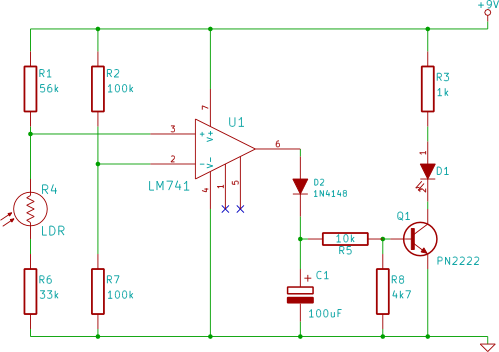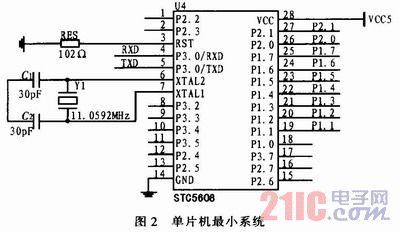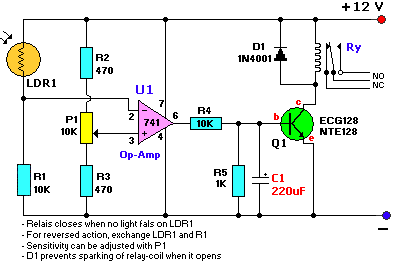
automatic light

This electronic breadboard circuit for beginners in electronics activates an LED automatically when the ambient light level falls below a specific threshold.
This circuit utilizes a light-dependent resistor (LDR) as the primary sensor to detect ambient light levels. The LDR is a type of resistor whose resistance decreases with increasing incident light intensity. When the light level drops below a predefined threshold, the resistance of the LDR increases, triggering a change in voltage across the circuit.
The circuit typically includes a power supply, such as a battery, connected to a voltage divider formed by the LDR and a fixed resistor. The output from this voltage divider is fed into a comparator or a transistor configured as a switch. When the voltage across the LDR exceeds a certain level, it turns on the transistor, allowing current to flow through the LED, which illuminates.
To enhance the circuit's functionality, a potentiometer may be included in the design, allowing users to adjust the sensitivity of the LDR and set the light threshold at which the LED activates. This feature provides flexibility, enabling users to customize the circuit for various lighting conditions.
Additional components such as a capacitor can be added to smooth out any fluctuations in the light level, preventing the LED from flickering as the light changes. A resistor in series with the LED limits the current to protect it from excessive current that could cause damage.
This simple yet effective circuit serves as an excellent introduction to basic electronics concepts, including light sensing, voltage dividers, and transistor switching, while providing a practical application in ambient light detection.In this electronic breadboard circuit for beginners in electronics, when the ambient light level drops below a certain level, the LED switches on automatically.. 🔗 External reference
This circuit utilizes a light-dependent resistor (LDR) as the primary sensor to detect ambient light levels. The LDR is a type of resistor whose resistance decreases with increasing incident light intensity. When the light level drops below a predefined threshold, the resistance of the LDR increases, triggering a change in voltage across the circuit.
The circuit typically includes a power supply, such as a battery, connected to a voltage divider formed by the LDR and a fixed resistor. The output from this voltage divider is fed into a comparator or a transistor configured as a switch. When the voltage across the LDR exceeds a certain level, it turns on the transistor, allowing current to flow through the LED, which illuminates.
To enhance the circuit's functionality, a potentiometer may be included in the design, allowing users to adjust the sensitivity of the LDR and set the light threshold at which the LED activates. This feature provides flexibility, enabling users to customize the circuit for various lighting conditions.
Additional components such as a capacitor can be added to smooth out any fluctuations in the light level, preventing the LED from flickering as the light changes. A resistor in series with the LED limits the current to protect it from excessive current that could cause damage.
This simple yet effective circuit serves as an excellent introduction to basic electronics concepts, including light sensing, voltage dividers, and transistor switching, while providing a practical application in ambient light detection.In this electronic breadboard circuit for beginners in electronics, when the ambient light level drops below a certain level, the LED switches on automatically.. 🔗 External reference





